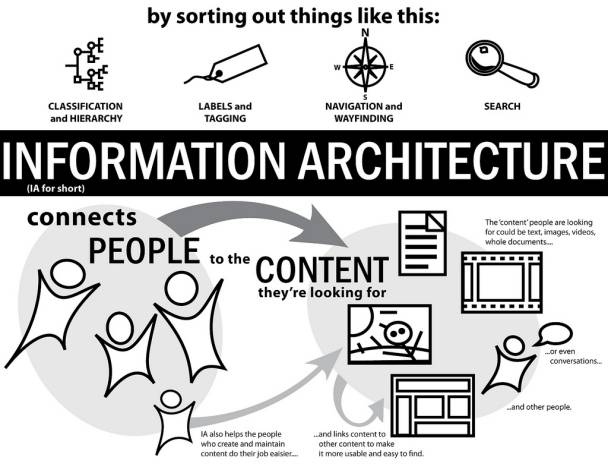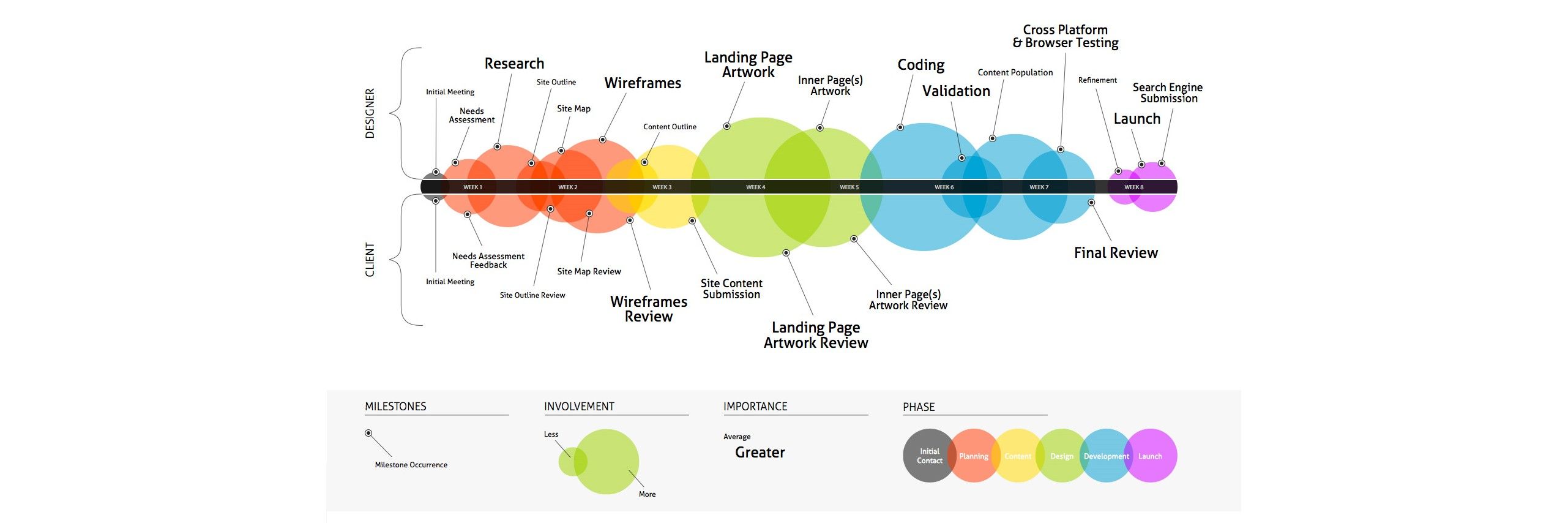This week, we’re going to take a step back and define some of the terminology that relates to User Experience design and its related fields. Each day we’ll look at one term and what it means and then at the end of the series – we’ll tie in how it all relates to User Experience design.
What is Information Architecture?
When it comes to the User Experience it’s not the technical infrastructure of information that we’re interested in nor are we interested in how the systems that we use to hold the data store that data; what we are interested in is how that data is presented to the user.
That means at the “big picture” view we’re concerned with how applications and websites display and organize data to our users. So we define what data will be held on any given page and then we determine how each page relates to other pages. One of the easiest ways to begin this process is to define a site map; this allows us to group pages together and helps determine the best structure to present them in.

Author/Copyright holder: Murray Thompson. Copyright terms and licence: All rights reserved Img source
Information architecture brings several challenges to the user experience designer and one of the biggest is how to bring together like terms so that they are sensibly classified. This is also known as “defining taxonomies” which sounds rather more complicated, doesn’t it? These taxonomies help us develop menus and other navigational structures to deliver a better user experience.
To get these taxonomies right; it’s a good idea to get involved in user research. This might be a structured interview to try and clarify how a user might approach a given data set. Or if the data sets are already defined and we want to test how logical they feel for the user – we might use card sorting techniques to see if the users group data in the same way that we did.

Author/Copyright holder: Conversion Rate Experts. Copyright terms and licence: All rights reserved Img source
Then there’s the tricky problem of incorporating pre-existing taxonomies. Big retailers, for example, will generally already have these defined for other systems and won’t be too happy if we mess about with them without some sort of overarching reason to do so. This can mean a careful examination of the existing taxonomy to ensure that menus, boxes, links, etc. can fully represent each taxonomy clearly without squashing data or omitting it entirely.
The best information architects will likely come from a background where they already have some experience in manipulating data. Librarians are a good example of this and so are DBAs (Data Base Administrators). The advantages of using a DBA include the ability to match your technical/system limitations to the user’s needs and achieve a “best fit” between the two to for an improved user experience when the perfect experience isn’t quite feasible.
Header Image: Author/Copyright holder: Unknown. Copyright terms and licence: Unknown. Img











